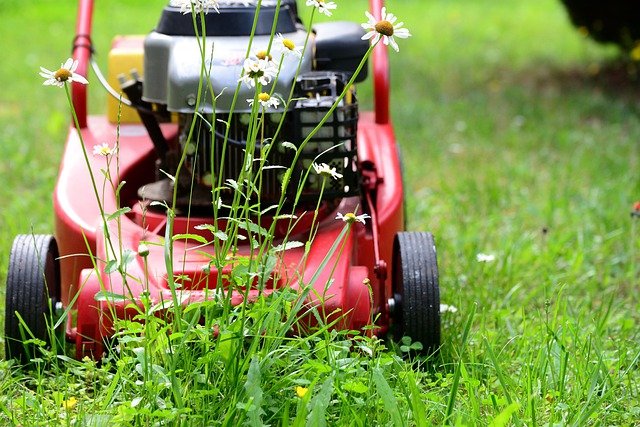
Tackling long grass can be a real challenge! When your grass grows past a certain length, you'll struggle to trim it with your normal lawnmower, in fact, trying to cut long grass with a lawnmower can cause some serious damage. So what happens if your grass gets too long? And what can you do to tackle it without destroying your lawn or lawnmower? Let's find out...
1. Set aside some time to tackle the problem
When your grass gets too long, it may take a few days to tackle the problem, so be conscious of this before you make a start. Make sure you have the tools that you need to tackle your long grass, this includes:
- A grass trimmer or scathe
- A lawnmower
- Grass seed
2. Getting started
The first thing you need to do to tackle long grass is take off the bulk of the length. Before you start hacking away at the lengths of grass before you, do a quick check through the grass to make sure there's no wildlife or debris that you'll come across. If the grass has been left for a long time, it's quite possible that there are things hidden amongst it, so to prevent damaging your machinery or injuring yourself, it's important that everything has been removed thoroughly. Once you're happy that all debris has been removed, we can start tackling the grass itself.
3. Getting the bulk off
As we've already mentioned, grass that's grown too long cannot be cut using a conventional lawnmower, so you need to grab a scathe or grass trimmer to remove the bulk of the grass. You should aim to remove the top few centimetres, leaving the remaining grass at a length that your lawnmower can tackle. Before we get to this step though, it's important you water your lawn and leave it for 1 to 2 days to recover. Otherwise, you could put your lawn under too much stress and it could start to die.
4. The important second cut
Once you're happy that the lawn has recovered from the first cut, it's time to go in and do the all-important second cut. This is where you'll start to see your new, neat lawn starting to shine through. We recommend setting your lawnmower to a high setting, so it only takes off a small amount of grass. Cutting too short, too quickly will (again) stress your grass out, and you may end up with additional problems like yellow patches that you have to deal with.
5. Does the lawn need treating or re-seeding?
Now that you can see the wood for the trees, you can assess whether or not there are areas of the lawn that have been damaged due to the overly long growth. You have to remember that when grass gets too long, it can prevent sunlight, water and nutrients from reaching the soil properly. Not only that, long, damp grass can quickly become a breeding ground for lawn fungus and other lawn diseases etc. so you might notice that some additional lawn problems crop up when you start dealing with the long grass.
Help, my lawn is patchy!
If your lawn is patchy after you've dealt with the long grass, we'd recommend re-seeding the sparse areas. Click the button below to find out about our overseeding treatment.
Overseeding >
Help, my lawn is diseased!
Don't worry, if your lawn has been through a hard time and come out the other side looking worse for wear, a professional disease protection treatment will restore it to its former glory!
Lawn Disease Protection >
If you have any other lawn care questions, or if you'd like to book a free lawn survey, get in touch with Lawn & Weed Expert today.